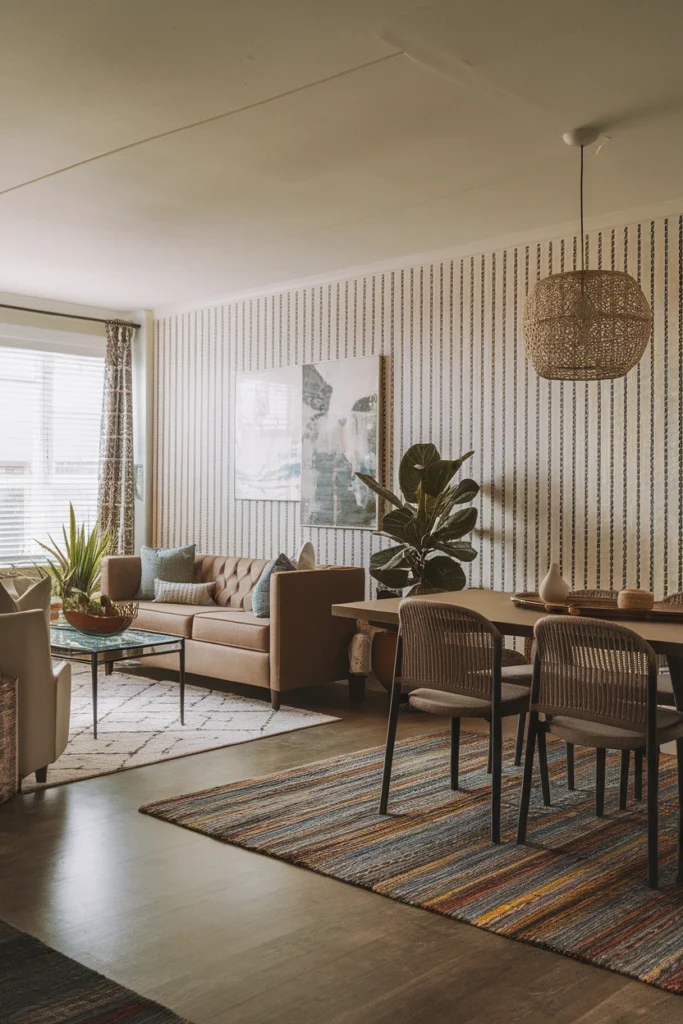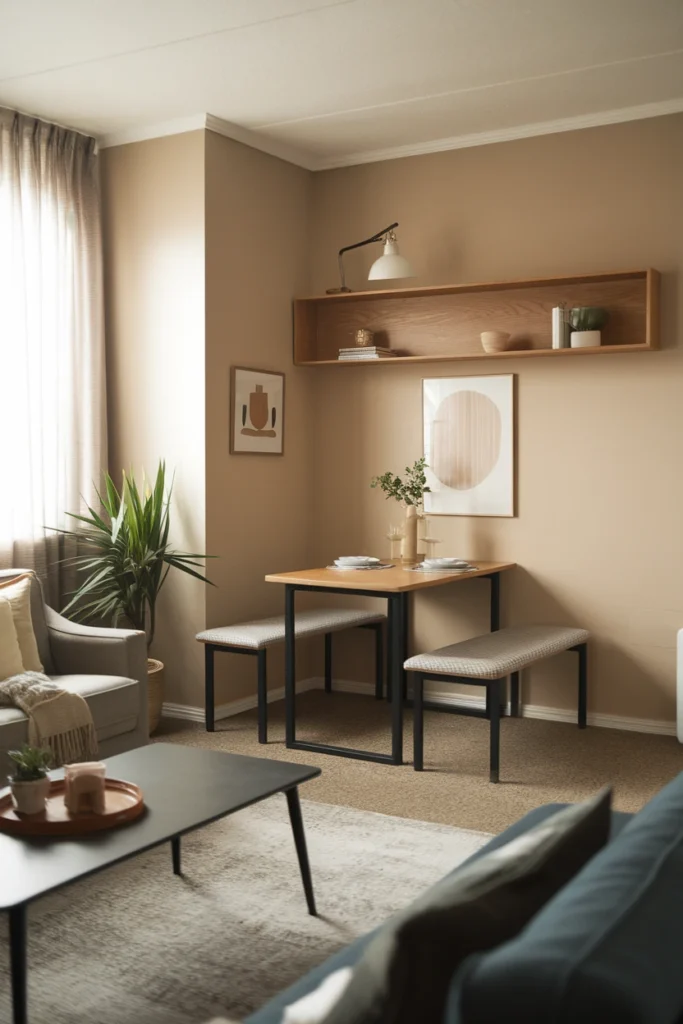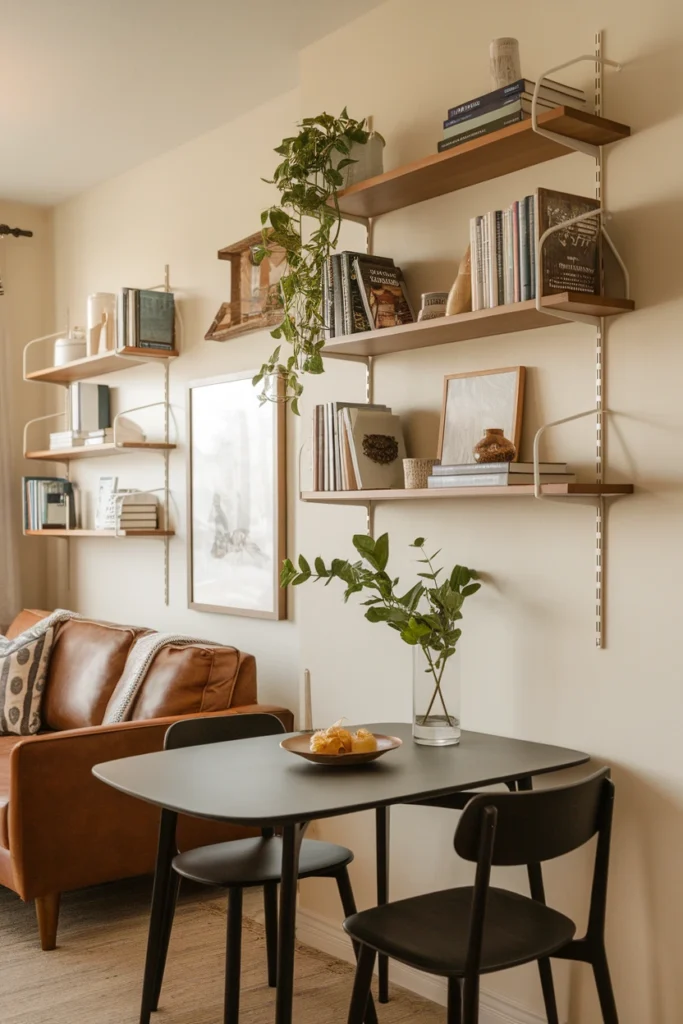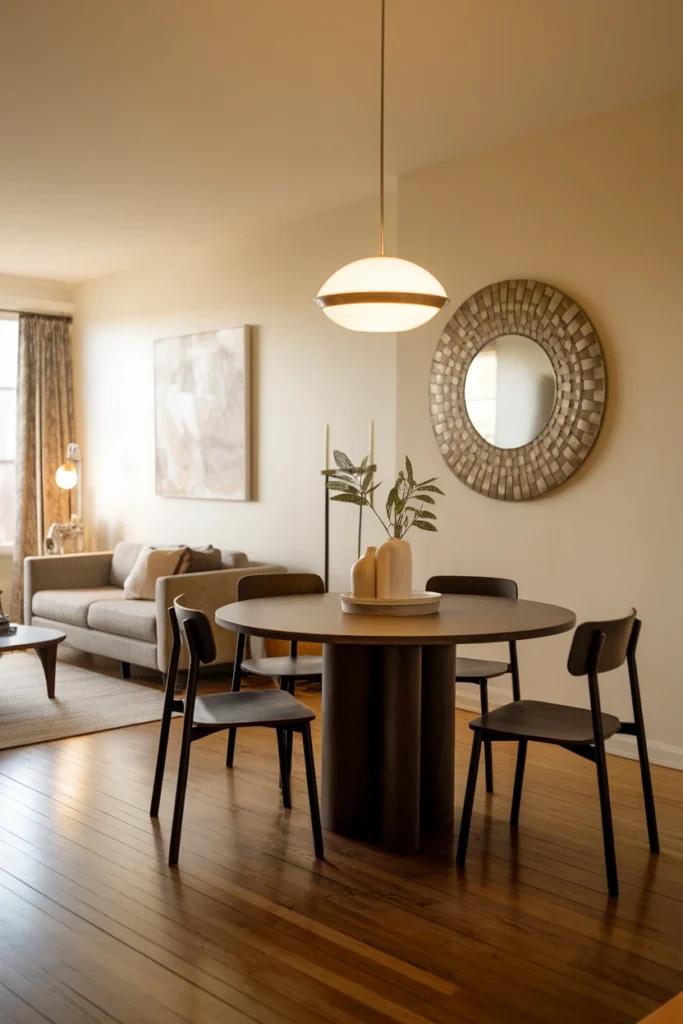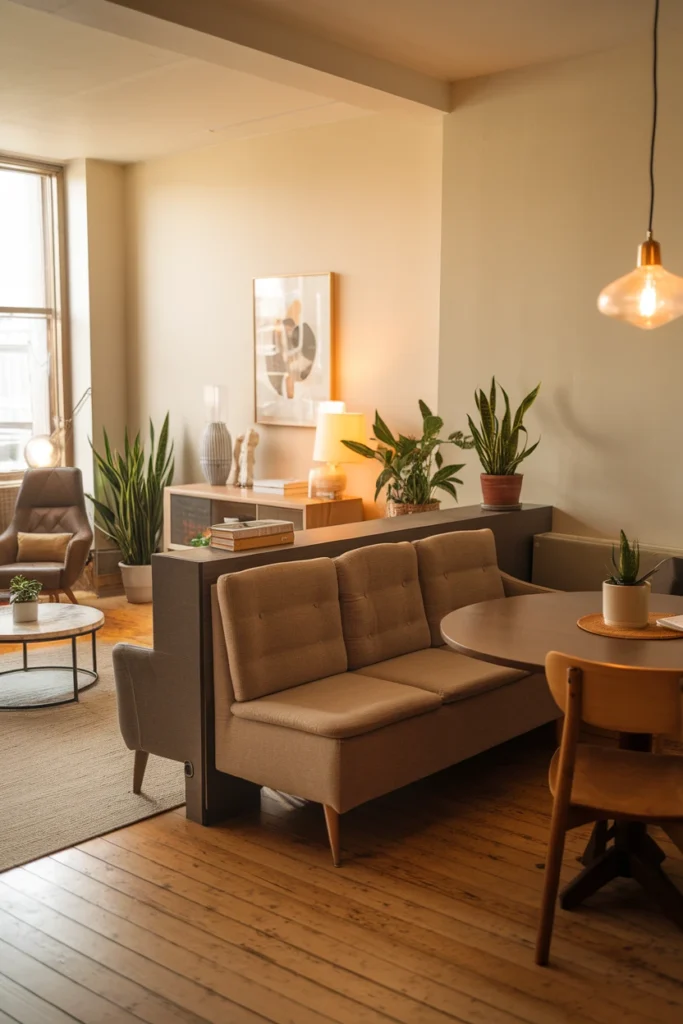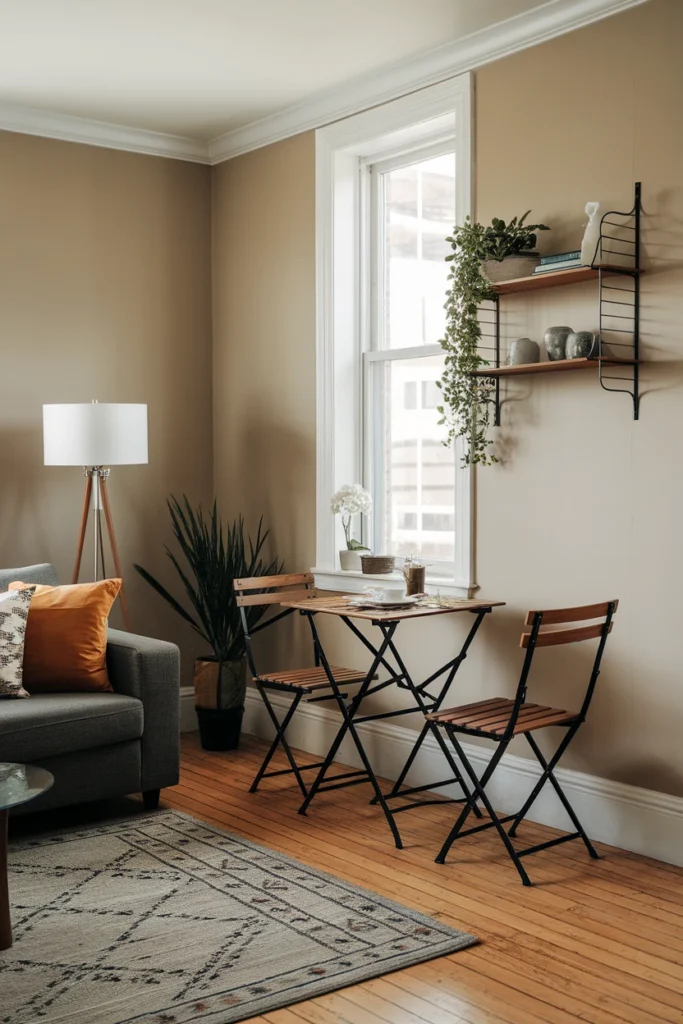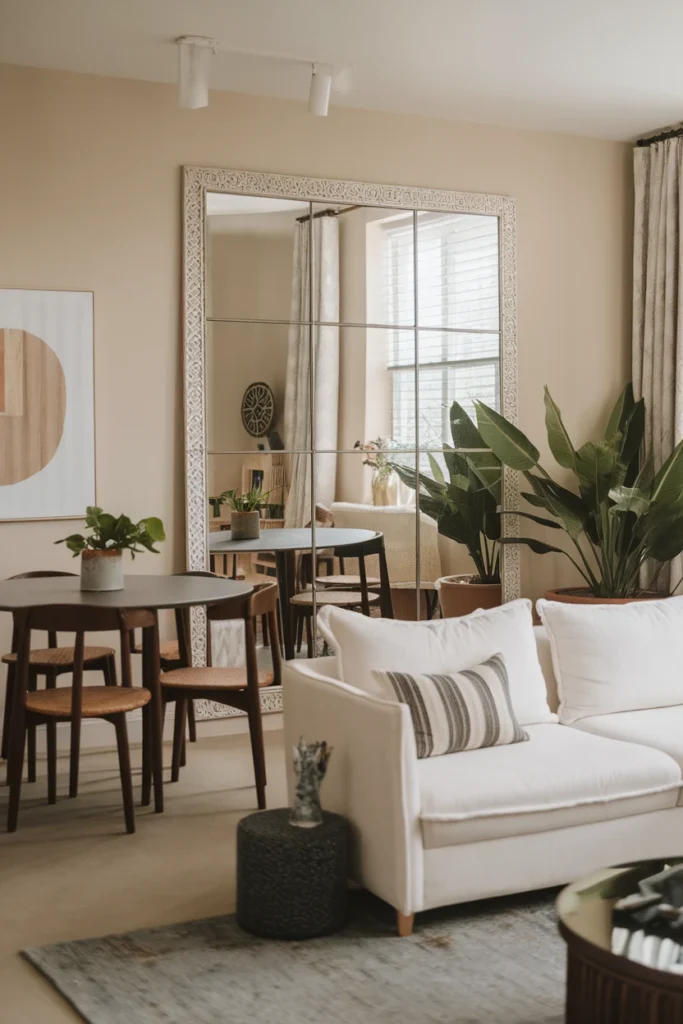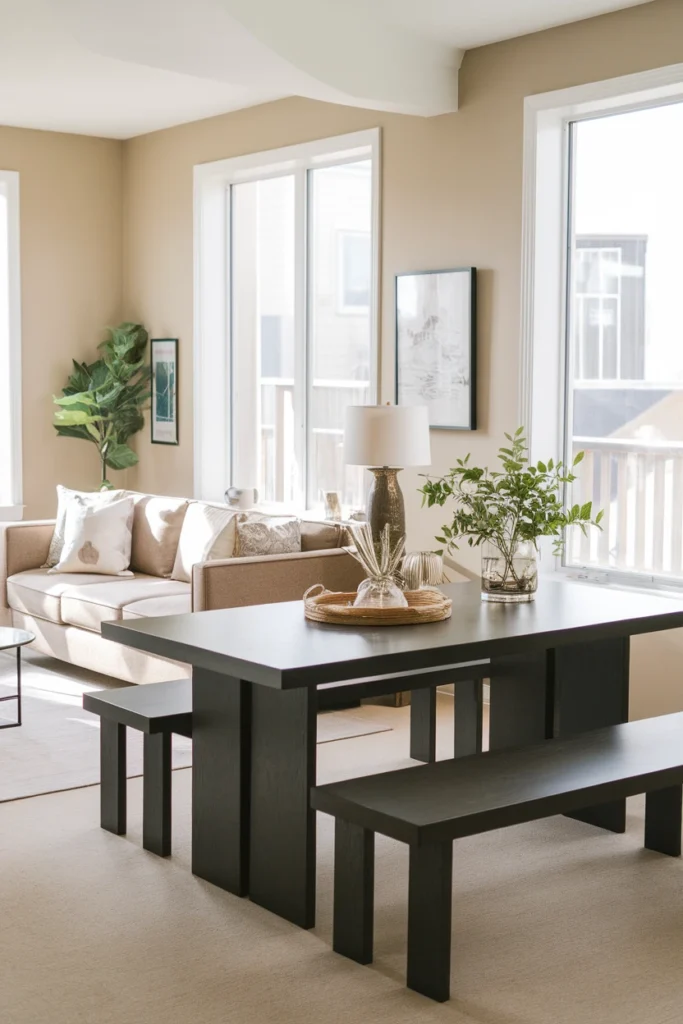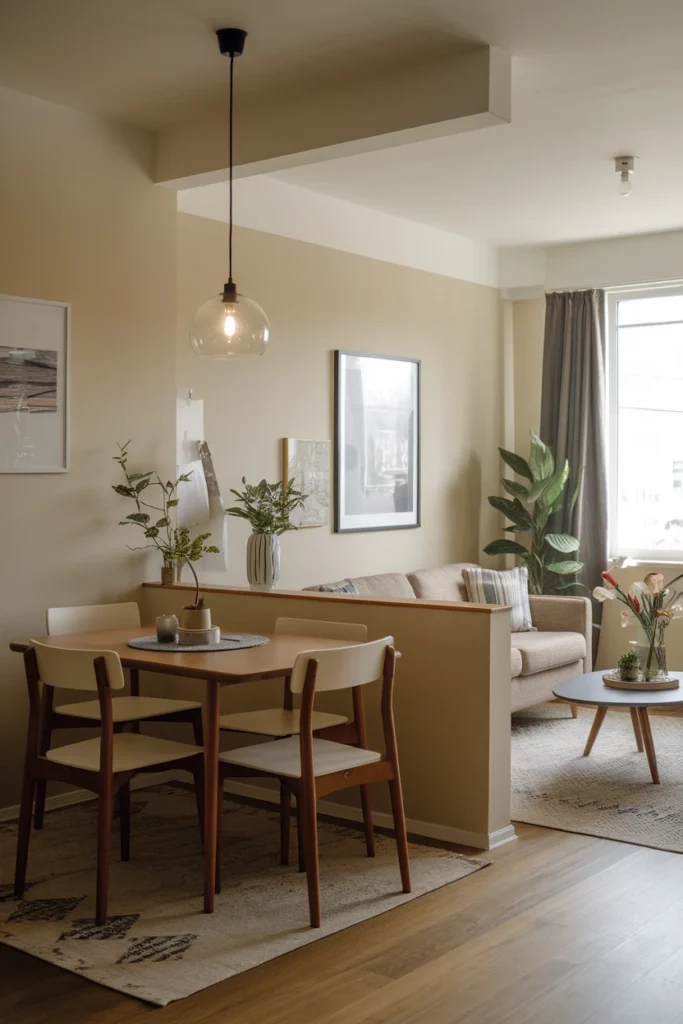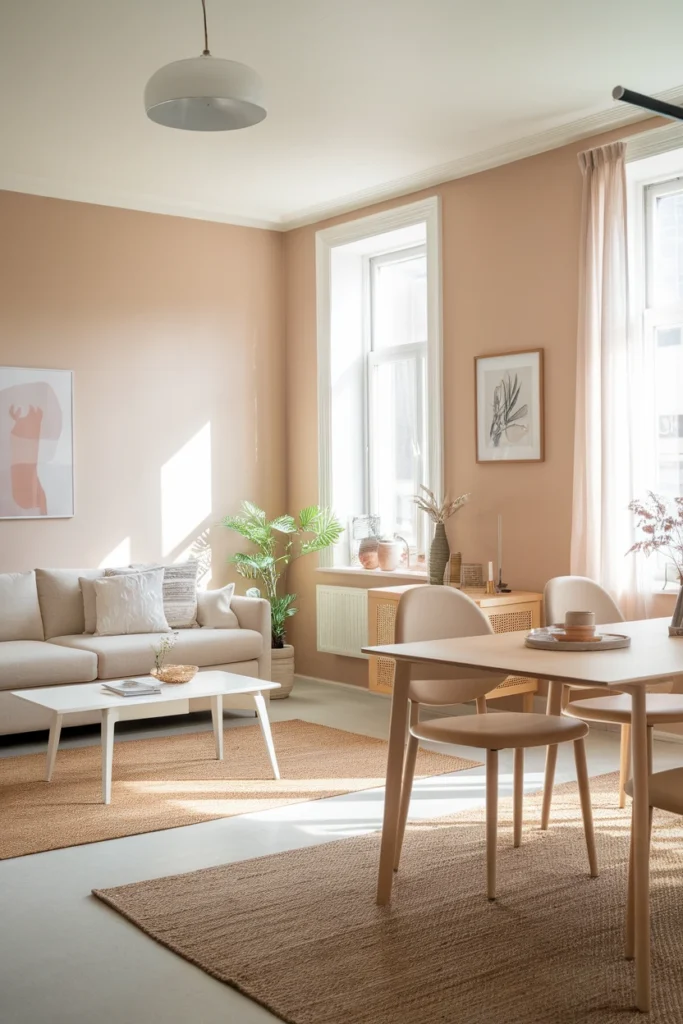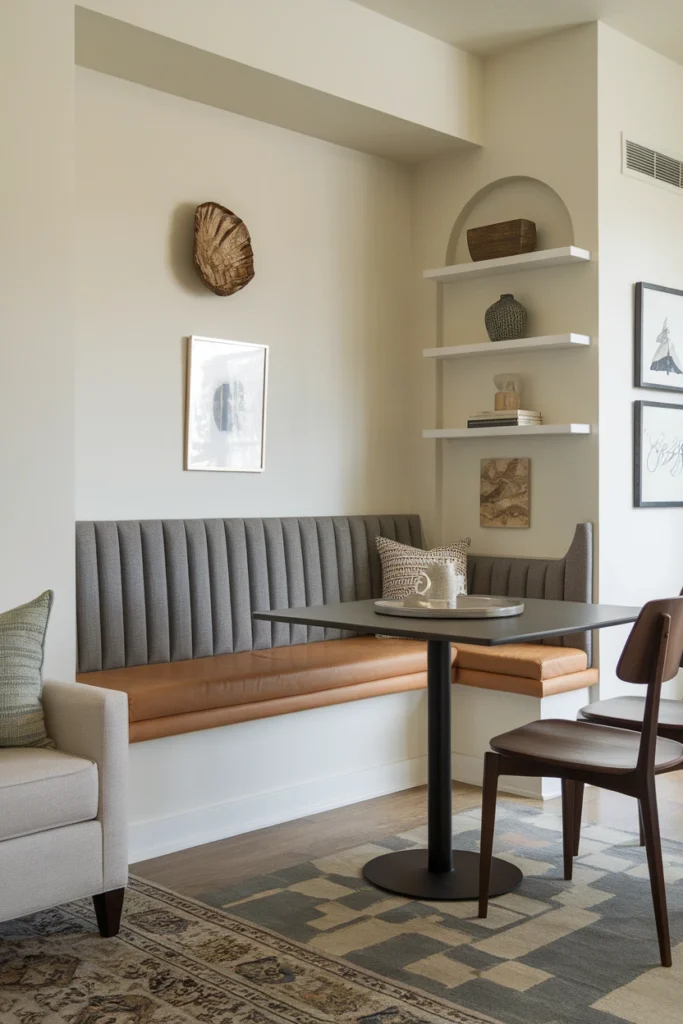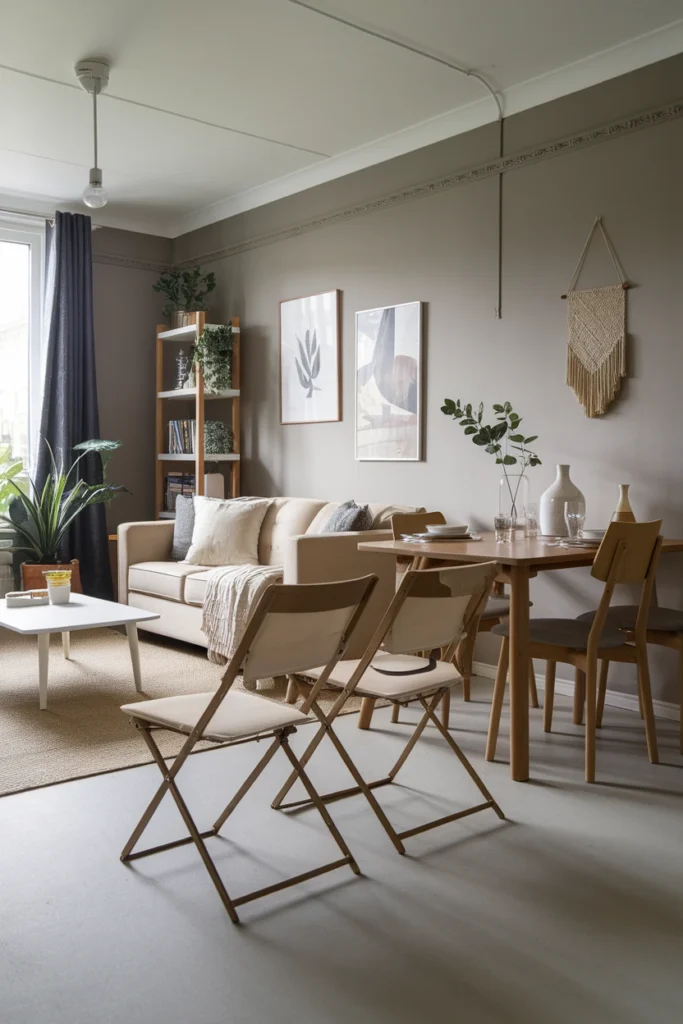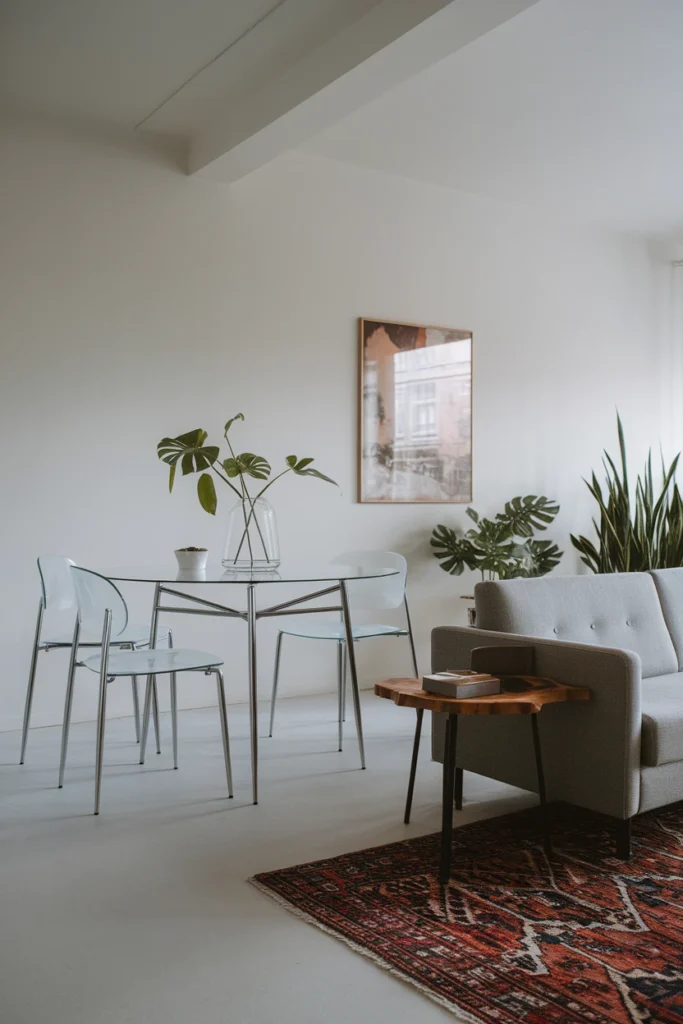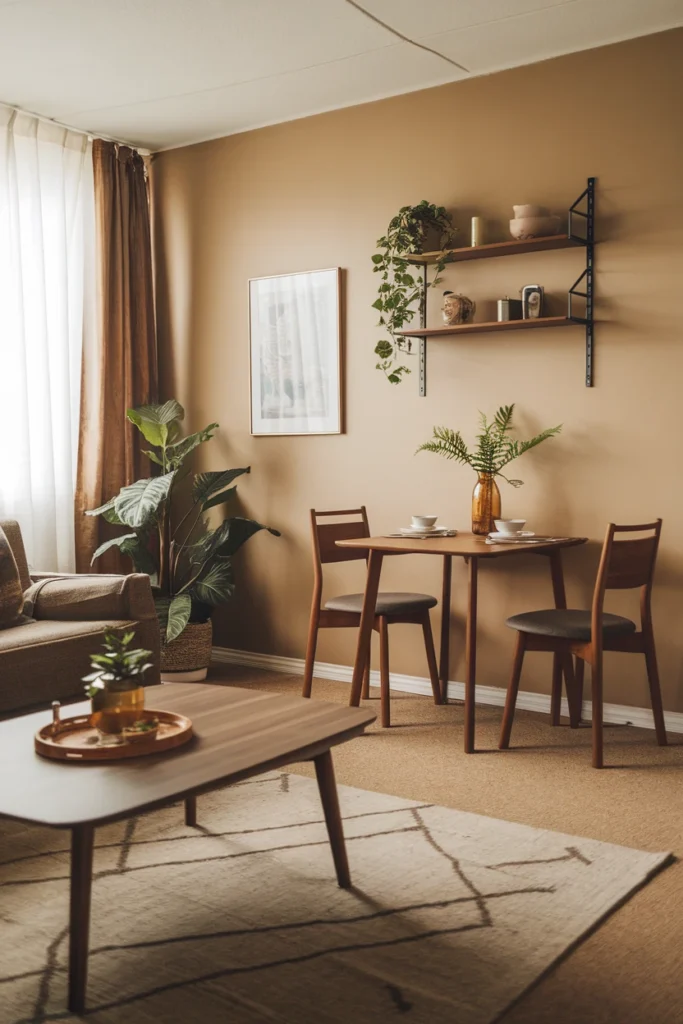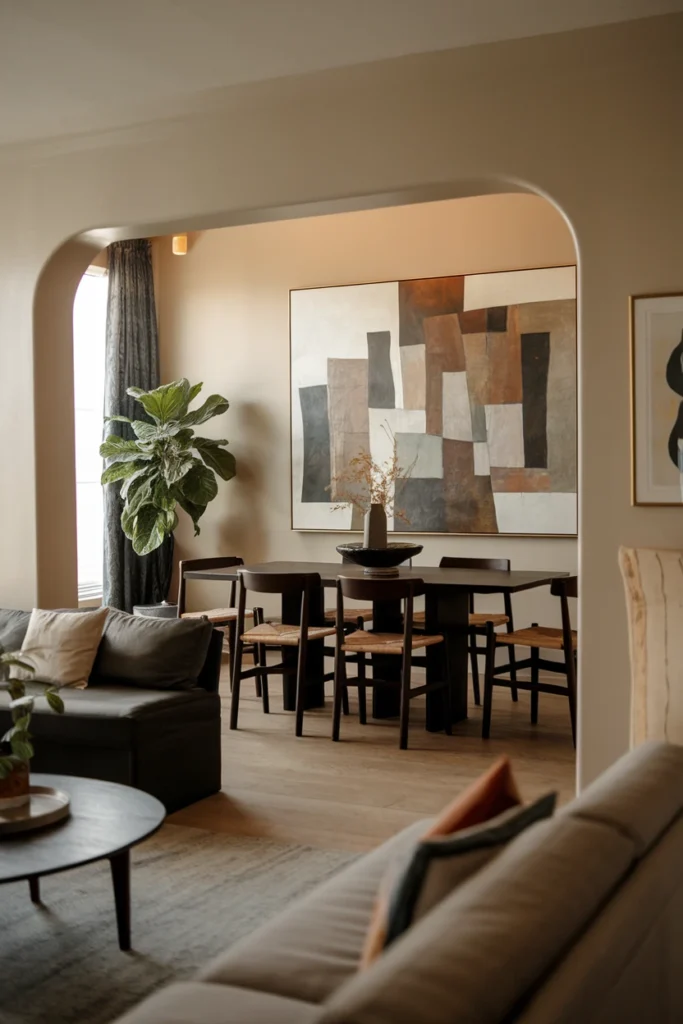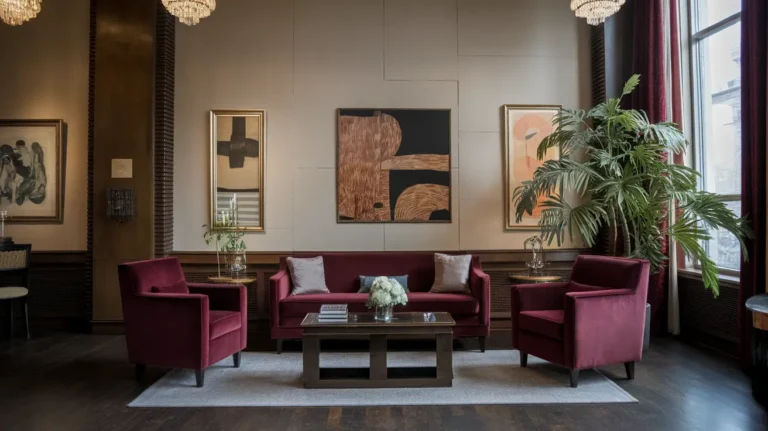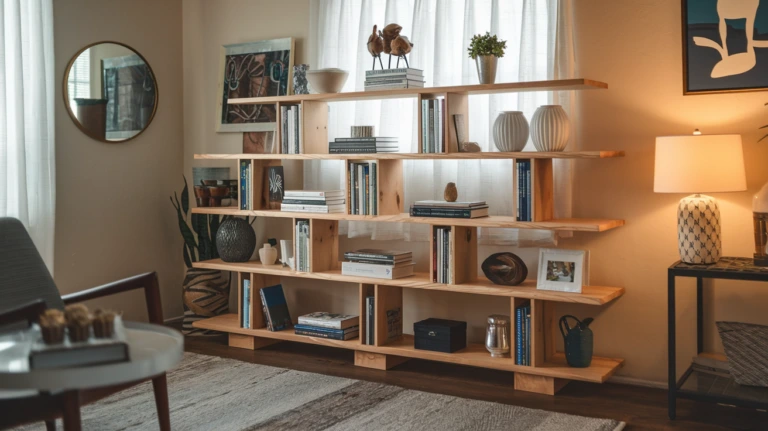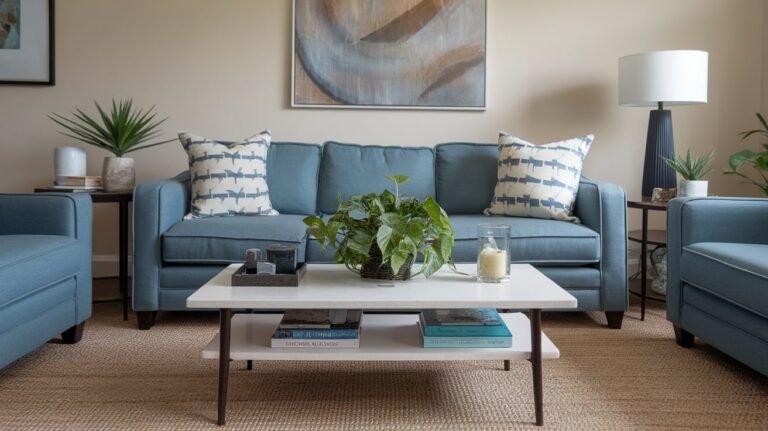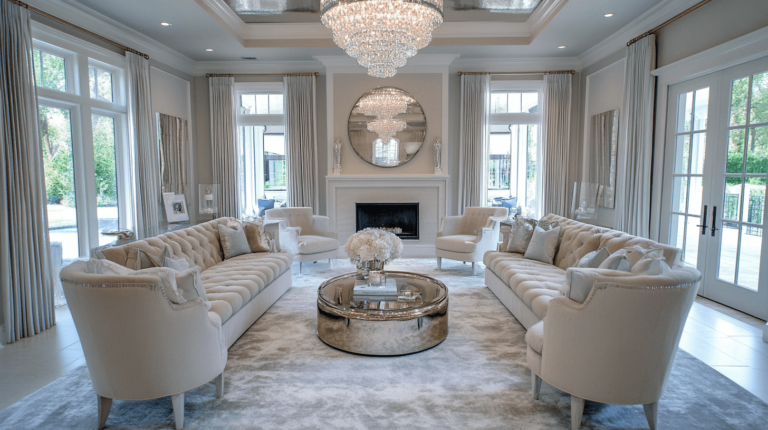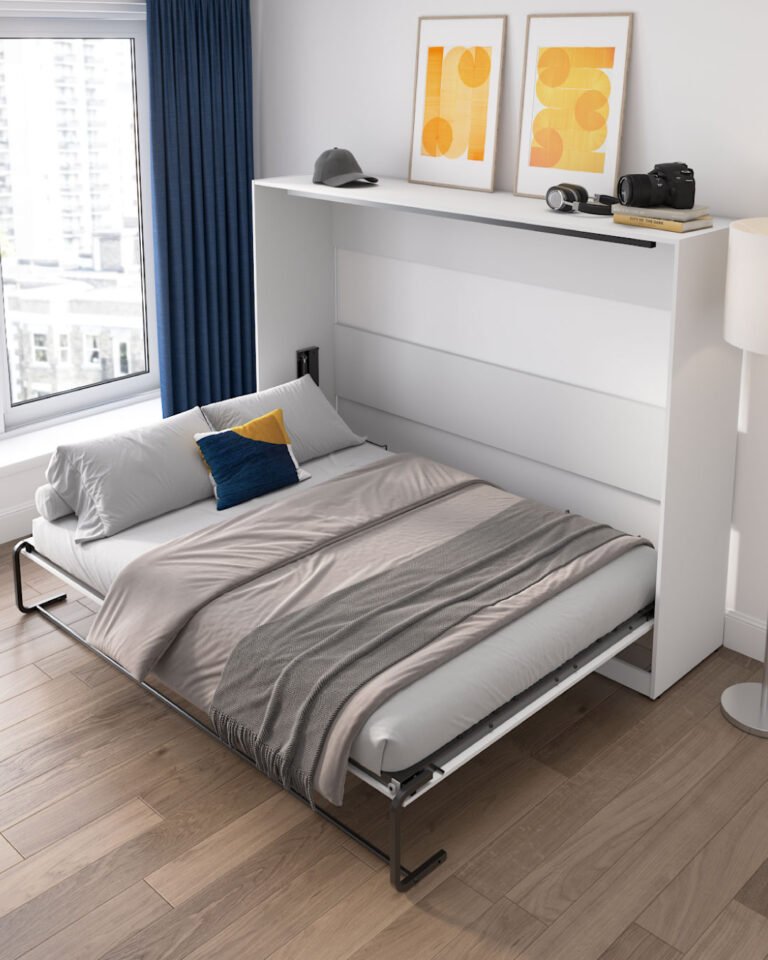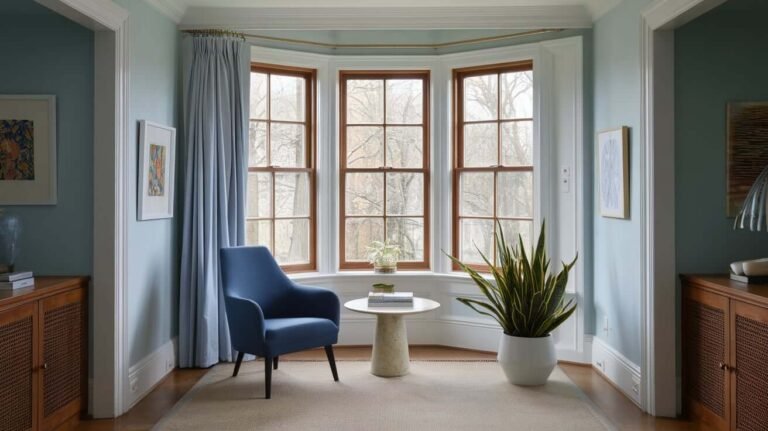18 Small Living Room Dining Room Combo Layout Ideas for Smart Spaces

Combining a living and dining area in a small home can feel like an intimidating puzzle. How do you make the most of limited square footage without sacrificing style, comfort, or functionality? It’s a challenge many face, especially in apartments or compact homes.
But the good news is that it’s entirely possible to create a space that works beautifully for both relaxing and dining.
With some creativity, clever furniture choices, and strategic planning, you can transform your compact space into a cozy, multi-purpose haven that feels both practical and inviting.
Below, we’ll share 18 practical, stylish layout ideas to inspire your small living room dining room combo and help you design a space that truly works for your lifestyle.
Now, let’s explore some exciting layout ideas.
18 Brilliant Layout Ideas for Small Living Room Dining Room Combos
1. Define Zones with Rugs
Use area rugs to visually separate your dining and living spaces, creating clear boundaries in an open floor plan.
For example, a plush, cozy rug under the couch can anchor your seating area, making it feel inviting and grounded, while a flat-weave or durable jute rug under the dining table establishes a distinct dining zone that’s easy to clean.
Rugs not only define these areas but also add texture, color, and warmth to your space, making it feel cohesive and comfortable.
For extra design impact, choose rugs that complement one another in tone or pattern without competing for attention.
2. Maximize Corners
Make the most of overlooked corners by placing a compact dining table with benches or an L-shaped seating arrangement that fits snugly into the space. This is especially useful in studio apartments or small homes where every inch counts.
Corner seating creates a cozy, intimate dining nook without taking up much floor space, leaving the rest of the room open for other essentials like a sofa or coffee table.
To enhance the aesthetic, add cushions and throws to corner seating for added comfort and a pop of color, creating a space that’s functional as well as inviting.
3. Go Vertical with Shelving
When floor space is limited, turn to the walls to expand your storage options. Wall-mounted shelves above your dining table or along the living room wall provide extra storage while utilizing vertical space that might otherwise go unused.
Display books, plants, framed photos, or decorative items on these shelves to add personality and style to your home.
Incorporating open shelving can also help draw the eye upward, making the room feel taller and more spacious. For a streamlined look, choose shelves in a color or material that complements your furniture.
4. Opt for Round Tables
Circular dining tables are ideal for small spaces, as they save room and improve traffic flow in tight layouts. Without sharp corners to navigate around, they create a smoother, more open feel in your space.
Their soft, rounded shape also adds an inviting, friendly touch to angular or boxy layouts, softening the overall look. Pair a round table with minimalist chairs to maintain a clean and airy design.
Consider a table with a pedestal base to maximize legroom, making it more comfortable for guests to sit around.
5. Use a Sofa as a Divider
Position your sofa to act as a natural divider between the dining and living areas in an open-concept layout. This arrangement eliminates the need for physical barriers like walls or screens, helping to maintain a sense of openness while still creating distinct zones.
A strategically placed console table or low shelf behind the sofa can further enhance the division, providing additional storage for books, decor, or even extra dining supplies.
This approach allows you to create functional spaces without crowding the room, giving it a polished, organized feel.
6. Incorporate a Foldable Table
A foldable table or drop-leaf table is a game-changer in small spaces. Use it as a dining table during meals, and fold it down when not in use to free up valuable floor space.
Some designs even come with built-in storage for chairs, plates, or other essentials, making them perfect for multi-functional living areas.
Look for tables with a sleek design that blends seamlessly with your decor, ensuring that even when folded, it adds style to the room. This flexible solution is perfect for those who frequently entertain but don’t have the space for a full-sized dining table.
7. Mirror the Space
Mirrors are a simple yet powerful way to make compact spaces feel larger and brighter. A large mirror placed on a prominent wall, such as behind the dining table or in the living area, reflects light and creates the illusion of a bigger room.
Choose a mirror with a decorative frame to double as an accent piece that enhances the overall style of your space.
To amplify the effect, position the mirror opposite a window to reflect natural light, instantly brightening and opening up the room.
8. Pair a Bench with a Rectangular Table
Benches are a practical and stylish alternative to traditional dining chairs, especially in smaller spaces.
They take up less visual and physical space than chairs and can be slid under the table when not in use for a clean, streamlined look. Benches also offer flexible seating, making them ideal for hosting guests or accommodating larger groups.
To make it even more functional, consider a bench with hidden storage underneath, perfect for stashing extra cushions, table linens, or other dining essentials.
9. Combine Functions
In small spaces, furniture often needs to pull double duty. Use your dining table as an extension of your workspace during the day, allowing you to maximize your limited square footage.
Pair the table with sleek, modern chairs that are comfortable enough for meals but can also double as extra seating in the living room when needed.
Add a stylish table lamp or portable desk organizer to easily transition the table from work mode to a dining setup. This multi-functional approach helps you get the most out of your space without feeling cramped.
10. Hang Pendant Lighting
A statement pendant light above your dining table not only defines the dining area but also serves as a striking focal point in the room. It draws attention upward, making the room feel taller and more open while adding a touch of elegance or personality to the space.
Choose a pendant light that complements your overall decor style—whether modern, industrial, or rustic—to tie the space together.
For added functionality, consider a fixture with adjustable brightness to create the perfect ambiance for meals, work, or relaxation.
11. Use Light Colors
Stick to a light, neutral color palette, such as whites, beiges, and soft pastels, to create an open and airy feel in your space.
Light colors reflect natural light, making even the smallest rooms feel brighter, more spacious, and less confined.
For a cohesive look, pair light walls with furniture in similar hues, and add subtle textures or accents—like a woven rug or soft throw pillows—for added depth and interest without overwhelming the room. This approach helps maintain balance while letting the natural light do most of the work.
12. Build a Banquette
Install built-in seating along one wall of your dining area to maximize space and functionality. A banquette not only saves room by eliminating the need for bulky chairs but also adds hidden storage underneath.
Use the storage space to stash items like table linens, board games, or extra kitchen supplies, keeping your area organized and clutter-free.
To make the banquette comfortable and inviting, add cushions and pillows in a mix of coordinating patterns and colors. This solution is ideal for small spaces, providing both seating and storage while creating a cozy dining nook.
13. Dual-Purpose Coffee Table
Invest in a lift-top coffee table that easily transforms into a dining surface when needed. This is perfect for casual meals in ultra-small spaces, allowing you to switch between lounging and dining without requiring separate furniture.
Look for a model with hidden storage compartments to keep items like coasters, remotes, napkins, or even magazines neatly tucked away, maintaining a clean and uncluttered look.
A dual-purpose coffee table is a lifesaver for studio apartments or compact living areas where space is at a premium, offering practicality and style in one piece of furniture.
14. Add Foldaway Chairs
Keep foldaway chairs on hand for when guests come over, but store them away when they’re not in use.
These space-saving seating options can be tucked into a closet, slid under the bed, or leaned against a wall for easy access without taking up valuable floor space. Choose chairs that are lightweight yet sturdy, ensuring they’re both functional and durable.
Consider stylish designs with neutral tones or sleek finishes so they complement your decor, even when stored in plain sight. With foldaway chairs, you’ll always be ready to host without compromising your everyday space.
15. Opt for Minimalist Furniture
Sleek, minimalist furniture with clean lines is essential for small spaces, as it prevents the room from feeling overcrowded or visually heavy.
Look for pieces with slim profiles, open frames, or materials like glass and metal to maintain a sense of lightness and airiness. For example, a glass dining table with slim metal legs can create the illusion of more space, while an open-frame bookshelf can offer storage without blocking sightlines.
Avoid bulky, overly ornate designs that can make the area feel cramped or cluttered. Minimalist furniture not only saves space but also creates a chic, modern aesthetic.
16. Create Flow with Matching Materials
Unify your living and dining areas by using consistent materials, such as matching wood tones, metal finishes, or upholstery fabrics. This creates a cohesive look that visually connects the two spaces, making your home feel larger and more harmonious.
For instance, you can match the wood finish of your coffee table to your dining chairs or use the same fabric for cushions in both areas.
Incorporating similar materials across both spaces ensures a seamless flow, preventing the rooms from feeling disjointed. This small design detail can make a big difference in how your space is perceived.
17. Use Art to Define Areas
Anchor your dining space with wall art to visually separate it from the rest of your room. A large painting, framed print, or gallery wall behind your dining table can serve as a focal point, clearly marking the dining area.
To maintain balance and a cohesive aesthetic, complement the dining art with smaller decorative accents in the living area, such as sculptures, framed photos, or vases.
This pairing keeps both spaces stylish and connected while giving each area its own identity. Artwork is a simple yet effective way to define spaces and elevate your overall design.
18. Add Plants for Life and Color
Bring your living and dining spaces to life by adding greenery, which can instantly brighten and energize a room. Potted plants, hanging greenery, or small succulents can add vibrancy and make your home feel more inviting.
Low-maintenance plants like snake plants, pothos, or ZZ plants are ideal for busy lifestyles, as they require minimal care. Place larger plants in corners to fill empty spaces and smaller ones on surfaces like shelves, coffee tables, or window sills to add a natural touch.
Adding plants not only enhances the aesthetic but also improves air quality, creating a healthier and more enjoyable environment.
Practical Tips and Tricks for Styling
Now that you have the layout ideas, here are some additional styling tips to bring the vision to life:
- Scale Down: Choose furniture appropriately sized for your space. Opt for small-scale chairs and tables to avoid overcrowding.
- Add Storage: Incorporate furniture with built-in storage, like ottomans, benches, or storage tables, to reduce visual clutter.
- Layer Light Sources: Use a mix of floor lamps, table lamps, and ceiling lights to ensure the space is well-lit without relying on bulky fixtures.
- Experiment with Angles: Don’t be afraid to angle furniture pieces to create more visual interest and a dynamic layout.
FAQs
How can you make a small room appear larger?
Use light colors, mirrors, and multipurpose furniture to maximize space and create an open, airy feel.
What’s the best way to choose furniture for a compact space?
Opt for smaller-scale furniture with clean lines and multifunctional features to suit the dimensions of the room.
How can you reduce clutter in a small living area?
Integrate storage solutions like wall-mounted shelves, storage ottomans, and hidden compartments to keep the area tidy.
Final Thoughts
Creating a functional and aesthetically pleasing living room dining room combo doesn’t have to be overwhelming. With these layout ideas and practical tips, you can transform your small space into a stylish, multi-purpose haven.
Try different arrangements, experiment with textures, and don’t shy away from personal touches to make the space truly yours.
Looking for expert advice? Reach out to professional designs to help craft the perfect layout for your unique needs.

